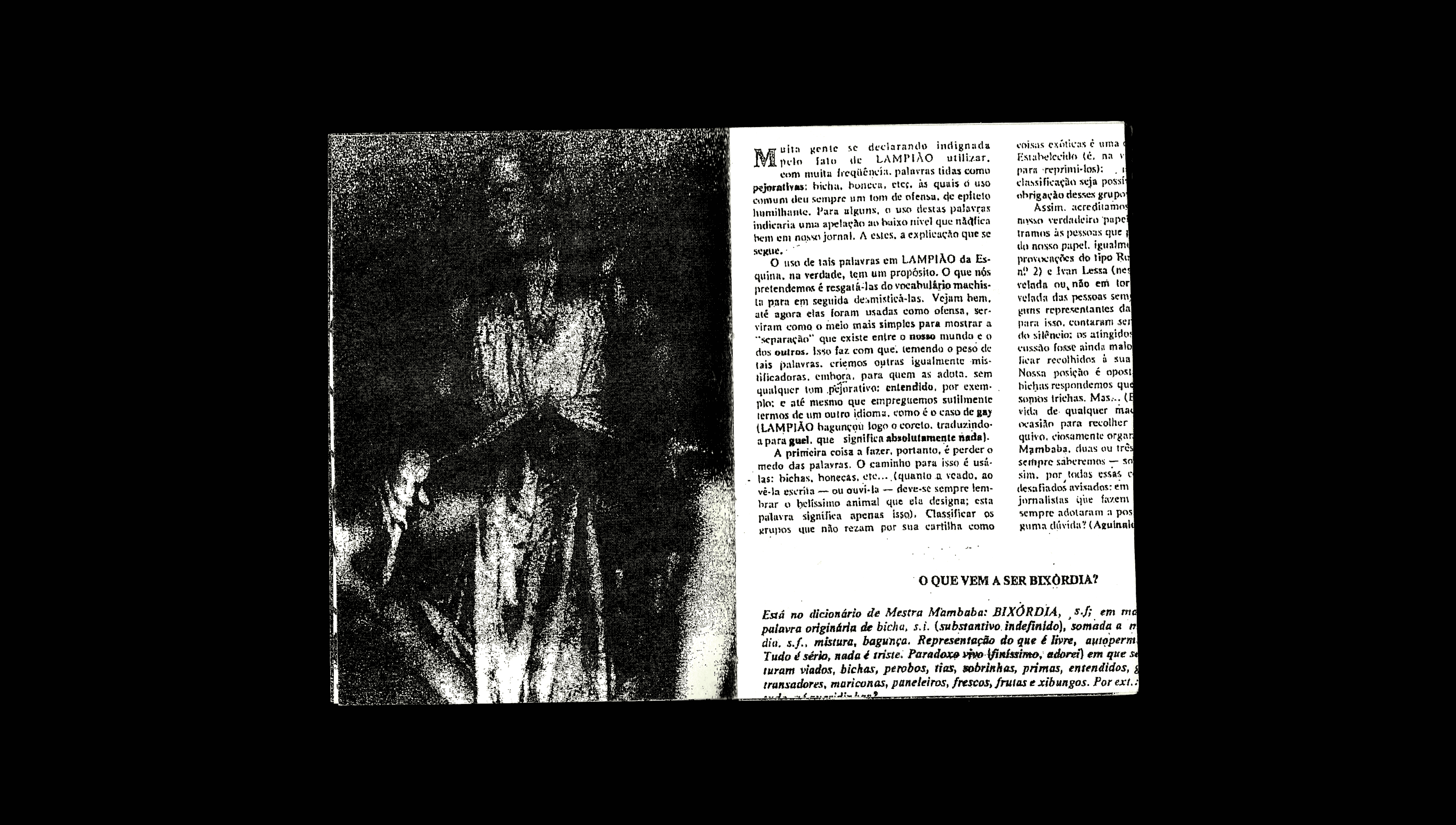Relampejo is a design research project that aims to explore the interplay between memories of dissident bodies and the artifacts that make possible for these memories to remain alive. Among the diverse array of practices and performances perpetuated across queer bodies over time and space, the act of printing holds a significant place. Through printing, numerous queer publications have come into existence throughout history, including fanzines, bulletins, newspapers, magazines, and many other forms of publication. These publications reflect the yearning of gender dissidents to assert their agency in narrating their own stories and controlling their representation through imagery.
This project is rooted in the examination of Lampião da Esquina, the first nationally circulated queer newspaper in Brazil, published from 1978 to 1981. The newspaper emerged during the era of the Brazilian Military Dictatorship, which intensified the violence faced in the process of its production. Lampião da Esquina played a pivotal role in fostering political awareness among queer individuals, sparking discussions that integrated the concerns of gender dissidents into the tumultuous Brazilian and global political landscapes.
The initial phase of the project unfolded during the Depara Exhibition, hosted on the digital facade of Espaço do Conhecimento UFMG — a large digital screen situated in one of the city's bustling venues. Through experimental visual processes involving photocopies of queer people images originally featured in Lampião da Esquina, a video was crafted, aiming to question the narrative of historical repetition and the erasure and resistance of these images over time.
As part of the research process on Lampião da Esquina, a fanzine was also designed. Featuring life-size clippings from the original newspaper, this publication serves as a reissue of the journal, utilizing recombination, clipping, reassembly, redesign and the creation of new connections between its textual and visual content. Through these processes, it updates and recontextualizes the presence of Lampião da Esquina's content in the contemporary world.







